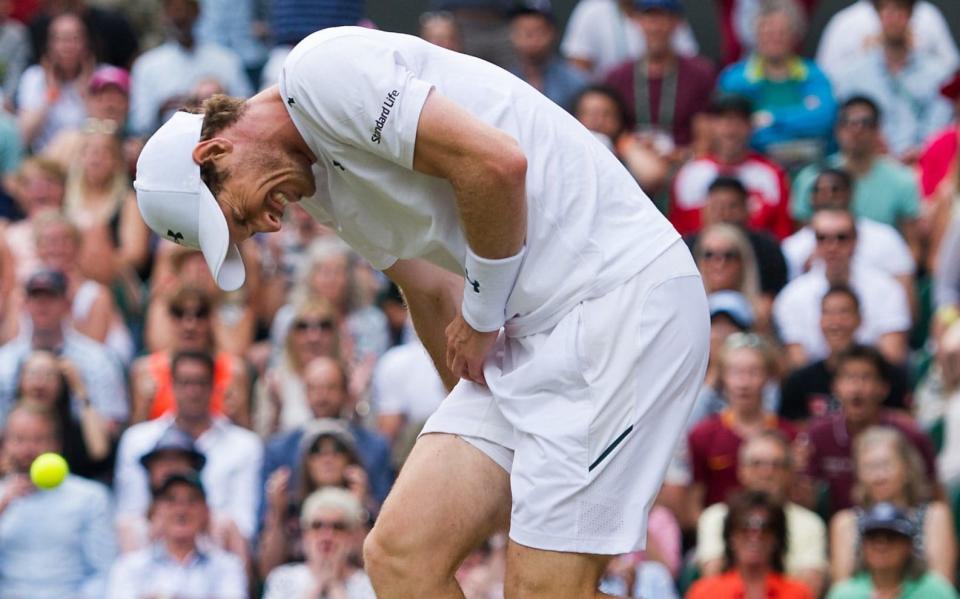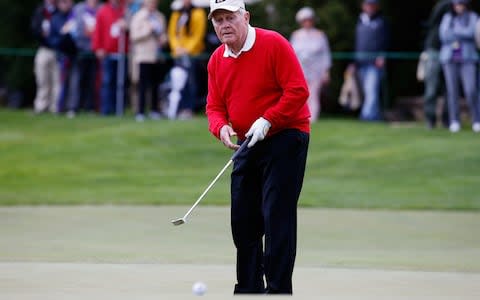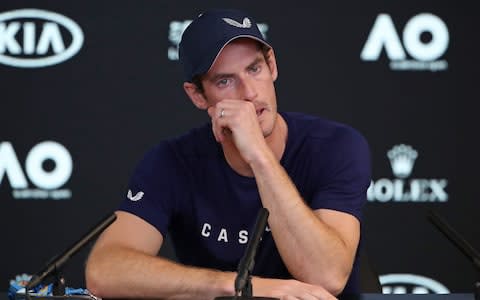Stem cell therapy which allowed Jack Nicklaus to play golf again could help Andy Murray, say scientists

Groundbreaking stem cell therapy which allowed Jack Nicklaus to play golf again after years of back pain could help Andy Murray, scientists believe.
Last year, Nicklaus 78, revealed that he had taken part in an experimental procedure which removed stem cells from his abdomen and inserted them into his lower back.
Before treatment he could not stand for longer than 10 minutes or swing a golf club, but after the 90 minute procedure Nicklaus was back on the golf course within a week, entirely pain free.
The treatment was developed by Sanford Health, the largest not-for-profit rural healthcare company in the US, which received much of its research funding from billionaire philanthropist Denny Sanford.
This week the company revealed positive results of its first clinical safety trial to repair rotator cuff injuries in the shoulder, and the company believes that the therapy could be used for all joints, including hip problems like Murray’s.

Murray, who announced his retirement earlier this week, is suffering from an unknown issue with his right hip which two operations have been unable to fix. Experts have speculated that the internal lining, or articular cartilage may damaged beyond repair by traditional methods.
But Professor Dave Pearce, Executive Vice President of Sanford Health and Professor of Paediatrics, at the University of South Dakota, said recent successes in stem cell therapies pointed to new hope.
“We have now carried out this treatment in a lot of joints and on each occasion we have wondered ‘is it going to work?’ and so far it has, in every case,” he said.
“I am not a doctor, but in terms of potentially curing Andy Murray I would say he should find a clinical trial and give it a shot. I don’t know how serious the injury is but if we can stimulate the repairing process then it will definitely get better.
“Procedures like this can be absolutely life changing.”
The treatment works by taking 100ml to 200ml of fat tissue from the patient’s abdomen, and spinning it in a centrifuge with a special enzyme mixture made from a substance produced by e.coli, which separates the stem cells.
Stem cells can become any cell in the body, and not only replace damaged tissue, but recruit repair mechanisms so the body also works to heal itself.
And because they are taken from the patient, there is no chance of rejection.

Nicklaus had the first therapy in 2016, and last year underwent further injections to help a shoulder injury. His son Gary also underwent the same back operation which allowed him to rejoin the senior tour after being unable to play golf for two years.
In his case, the stem cells also migrated to his hip and fixed problems in that area as well.
The latest 12 month rotator cuff shoulder study of 12 patients was found to meet all US Food and Drug Administration (FDA) safety criteria and the company is now moving to an 18 month trial at 15 sites involving up to 246 participants.
Sanford is also currently enrolling patients for trials help repair facet joints in the spine and osteoarthritis in the wrist, and is already in phase three trials - the final step - for osteoarthritis of the knee.
“It is important for us that any study in which we are involved goes through all the proper channels, with rigorous clinical trials and the approval of the FDA,” added Prof Pearce.
The latest rotator cuff results will be being presented by Sanford Health, at the World Stem Cell Summit (WSCS) in Miami next week.
“We want to make sure we’re following every guideline possible to ensure the rigor of the research we are involved in,” said Dr Tiffany Facile, director of regenerative medicine at Sanford.
“We’re excited to present on our work and show others possible pathways to finding uses for adipose-derived regenerative cells.”
